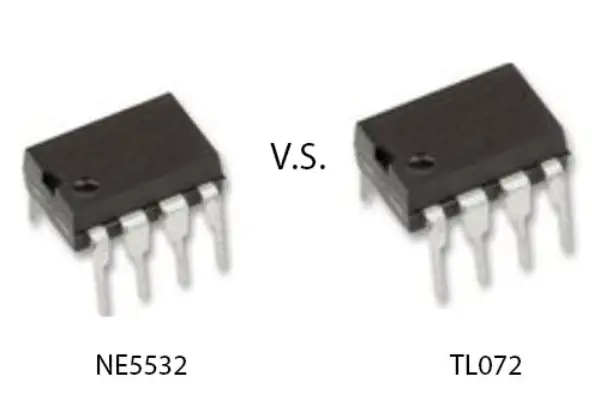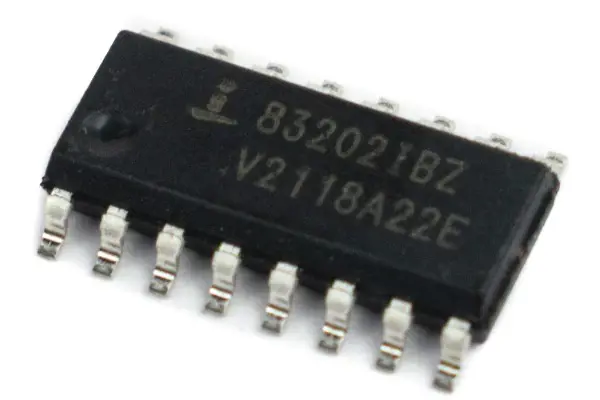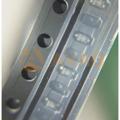1N4007 SMD Diode: Equivalent, Datasheet PDF and Specs
 Published: Aug 21, 2023
Published: Aug 21, 2023
Contents
The 1N4007 SMD diode is a fundamental semiconductor component that serves as a critical building block in electronic circuits. In this article, we will delve into the equivalent options, datasheet resources, and specifications of the 1N4007 SMD diode, providing valuable insights for both newcomers and experienced practitioners seeking to incorporate this component into their electronic projects.
What is 1N4007 SMD Diode
The 1N4007 is a common rectifier diode that is widely used in electronic circuits to convert alternating current (AC) to direct current (DC). It is often used for power supply applications and voltage rectification.
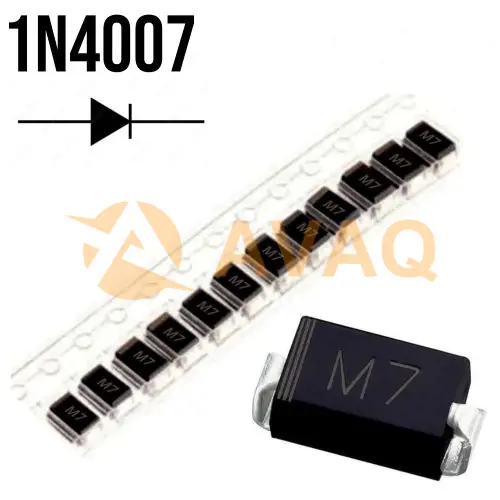
The "1N4007" refers to the part number of the diode, and it is available in different packages, including through-hole and surface-mount device (SMD) packages. The "1N" prefix is a generic identifier for a standard diode, and the "4007" indicates a specific variant.
1N4007 SMD Diode Specification and Features
Here are the specifications:
- Strong forward surge tolerance: 30A
- Maximum forward average rectification current: 1.0A
- Limit parameters for VRM ≥ 50V
- Maximum reverse withstand voltage: 1000V
- Maximum reverse leakage current: 5uA
- Forward voltage drop: 0.7V
- Maximum reverse peak current: 30uA
- Typical thermal resistance: 65°C/W
- Typical junction capacitance: 15pF
- Operating Temperature: -50°C ~ +150°C
Features:
Rectification: Converts AC to DC, allowing only unidirectional current flow.
Reverse Voltage: Maximum reverse voltage is 1000V, suitable for rectifying high voltage AC signals.
Forward Current: Maximum forward current is 1A, which can withstand medium current loads.
Forward Voltage Drop: Forward voltage drop is approximately 1V (at 1A current) during conduction.
Standard Diode: The 1N4007 SMD diode has a standard rectifier construction with anode (positive) and cathode (negative) ports.
Reliability: Known for their stability and robustness, they are suitable for a wide range of operating conditions.
Long Reverse Recovery Time: Relatively long reverse recovery time makes them unsuitable for high-frequency applications requiring fast switching.
Surface Mount Design: Designed for surface mounting onto printed circuit boards (PCBs) as SMD components for automated assembly in modern electronics manufacturing.
COMPACT SIZE: SMD packages are compact in size and take up less space on the PCB than traditional plug-in diodes.
Package Identification: 1N4007 SMD diodes are typically packaged in rectangular packages with clear markings for part number, polarity and other pertinent information.
Commonly Available: 1N4007 SMD diodes are widely used in a variety of electronic devices such as power supplies, voltage rectification and basic signal conditioning.
1N4007 SMD Equivalent
1. Diode M7
The "M7" SMD diode typically refers to the surface-mount version of the 1N4007diode. This diode is widely used for rectification and voltage conversion in electronic circuits. The "M7" designation is often associated with its surface-mount package, which is commonly referred to as the SMA (DO-214AC) package.
Here are the key specifications of the M7 SMD diode (1N4007M7):
- Maximum Reverse Voltage: 1000V
- Maximum Forward Current: 1A
- Forward Voltage Drop: Typically around 1V at 1A current
- Package: SMA (DO-214AC) surface-mount package
- Application: Rectification and voltage conversion in electronic circuits
The M7 SMD diode, like its through-hole counterpart (1N4007), is used in a variety of applications where converting alternating current (AC) to direct current (DC) is required. It's important to consult the manufacturer's datasheet for specific details and characteristics, especially if you're using it as a replacement or equivalent in a particular circuit.
2. Voltage Range of 1N4007
The 1N4007is a rectifier diode with a maximum reverse voltage rating of 1000V. This means it can handle voltages up to 1000 volts in the reverse direction. It is commonly used for rectification and voltage conversion in circuits where the input voltage is within this range.
1) Voltage range: 800V - 1000V
💎 1N4007 SMD Diode Equivalent: HER158, HER208, FR207, and FR107
|
Characteristic |
HER158 |
HER208 |
FR207 |
FR107 |
|
Maximum Reverse Voltage |
1000V |
1000V |
1000V |
1000V |
|
Maximum Forward Current |
1A |
2A |
2A |
1A |
|
Forward Voltage Drop |
Approximately 1V (at 1A current) |
Approximately 1V (at 2A current) |
Approximately 1V (at 2A current) |
Approximately 1V (at 1A current) |
|
Package |
SMA (DO-214AC) |
SMA (DO-214AC) |
SMA (DO-214AC) |
DO-41 |
|
Application |
Rectification and voltage conversion |
Rectification and voltage conversion |
Rectification and voltage conversion |
Rectification and voltage conversion |
2) voltage range: > 1000V
💎 1N4007 SMD Diode Equivalent: EM513, EM520, or 1N5399
1N4007 SMD Diode Datasheet PDF
Check and download 1N4007 SMD diode datasheet PDF here>>
1N4007 SMD Diode Footprint
Check the 1N4007 SMD diode footprint:
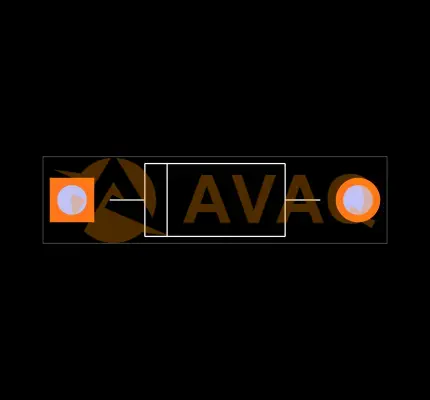
1N4007 Diode SMD Package
The 1N4007diode is also available in a surface-mount device (SMD) package, often referred to as the "1N4007 SMD" diode. The SMD package type for the 1N4007 SMD diode is typically SMA (DO-214AC), which is a rectangular surface-mount package. This package allows for easy soldering onto printed circuit boards (PCBs) and is commonly used in a wide range of electronic applications for rectification and voltage conversion.

1N4007 Advantages and Disadvantages
Advantages of 1N4007Diode:
- High Voltage Rating: The 1N4007diode can handle a maximum reverse voltage of 1000V, making it suitable for applications involving higher voltage levels.
- Widely Available: The 1N4007diode is a widely used and standardized component, making it easy to source from various manufacturers.
- Low Cost: Due to its popularity and widespread use, the 1N4007diode is generally inexpensive, making it cost-effective for many applications.
- Basic Rectification: It's well-suited for basic rectification tasks where converting alternating current (AC) to direct current (DC) is needed.
- Robust and Reliable: The 1N4007diode is known for its reliability and robustness in various operating conditions.
- Simple Design: It has a simple design and is easy to incorporate into circuits.
Disadvantages of 1N4007Diode:
Slow Recovery Time:The 1N4007diode has a relatively slow reverse recovery time, which means it may not be suitable for high-frequency applications or fast switching requirements.Higher Forward Voltage Drop:The forward voltage drop across the diode can lead to higher power losses, especially in high-current applications.Limited Precision:It may not be suitable for precision applications due to its relatively wide tolerance range for forward voltage drop.Limited Current Handling:While it can handle moderate current levels (up to 1A), it might not be suitable for high-current applications that require higher current ratings.Temperature Sensitivity:The voltage drop and other characteristics of the diode can be affected by temperature variations, which might limit its accuracy in certain applications.Limited to Basic Functions:While the 1N4007is versatile, it's not suitable for advanced or specialized functions that require specific diode properties.
1N4007 Application
- 💡 Power Supplies: Converting alternating current (AC) to direct current (DC) for powering devices.
- 💡 Battery Chargers: Transforming AC to DC for charging batteries.
- 💡 Rectification: Converting AC signals to pulsating DC signals.
- 💡 Signal Demodulation: Extracting information from amplitude-modulated (AM) signals.
- 💡 Protection Diode: Preventing reverse voltage damage to sensitive components.
- 💡 Polarity Protection: Safeguarding components from accidental reverse voltage.
- 💡 LED Drivers: Adapting AC to suitable DC for driving LEDs.
- 💡 Basic Signal Conditioning: Shifting voltage levels and basic signal processing.
- 💡 General Rectification: Versatile usage wherever AC-to-DC conversion is needed.
Conclusion
In conclusion, the 1N4007 SMD diode stands as a foundational component in the world of electronics, contributing to rectification and signal modulation in countless applications. Its compatibility with SMD designs, combined with its essential functionality, makes it a staple among electronics professionals and hobbyists alike. Whether you are building prototypes, enhancing existing systems, or exploring new applications, the 1N4007 SMD diode will undoubtedly play a pivotal role in shaping the performance and functionality of your electronic designs.
 FAQ
FAQ
- Can the 1N4007 SMD Diode be used in AC circuits?
- Yes, the 1N4007diode is commonly used in AC-to-DC conversion circuits to rectify alternating current.
- Can the 1N4007 SMD Diode handle high current?
- The 1N4007diode has a forward current rating of 1A, which makes it suitable for moderate power applications.
- How does the 1N4007 SMD Diode work?
- When the voltage across the diode is applied in the forward direction (anode positive, cathode negative), it conducts and allows current to flow. In the reverse direction, it blocks current.
- What is the function of the 1N4007 SMD Diode?
- The 1N4007diode allows current to flow in one direction (from anode to cathode) and blocks current in the opposite direction. It is commonly used in power supplies and rectification circuits.
- What does SMD mean in 1N4007 SMD Diode?
- SMD stands for Surface Mount Device, indicating that the diode is designed for surface mount assembly on printed circuit boards.
1N4007-T In Stock: 6726
 Popular Industry Focus
Popular Industry Focus
Hot Products
-
![DMP3017SFGQ-7]()
DMP3017SFGQ-7
DIODES
P-Channel 30 V 11.5A (Ta) 940mW (Ta) Surface Mount POWERDI3333-8
-
![MBRD20100CT-13]()
MBRD20100CT-13
Diodes Incorporated
Diode Schottky 100V 20A 3-Pin(2+Tab) DPAK T/R
-
![PDS5100H-13]()
PDS5100H-13
Diodes Incorporated
SMT Schottky Diode
-
![ZXMS6006SGTA]()
ZXMS6006SGTA
Diodes Incorporated
Trans MOSFET N-CH 60V Automotive 4-Pin(3+Tab) SOT-223 T/R
-
![ZHCS400TA]()
ZHCS400TA
Diodes Incorporated
Phase, 1 Element, 0.4A, 40V Reverse Voltage
-
![ZSR500GTA]()
ZSR500GTA
Diodes Incorporated
Linear Voltage Regulator IC Positive Fixed 1 Output 200mA SOT-223-3
Related Parts
-
![PESD5Z5.0]()
PESD5Z5.0
NXP
Unclassified YES 150 °C 2 DUAL FLAT
-
![BZV55-C12]()
BZV55-C12
Microchip
Product BZV55C12
-
![TPD2E009DRTR]()
TPD2E009DRTR
TI
Dual 0.7-pF, 5.5-V, ±8-kV ESD protection diode with 5-A surge rating
-
![STPS30L30DJF-TR]()
STPS30L30DJF-TR
ST
30 V, 30 A PowerFLAT Low Drop power Schottky Rectifier
-
![NUF2042XV6T1G]()
NUF2042XV6T1G
Onsemi
2 42pF 2 SOT-563 EMI Filters (LC, RC Networks) ROHS
-
![UDD32C05L01]()
UDD32C05L01
YAGEO
18.3V Clamp 17A (8/20µs) Ipp Tvs Diode Surface Mount SOD-323
-
![BYV26E]()
BYV26E
Vishay
Diode 1000 V 1A Through Hole DO-41
-
![15MQ040NTRPBF]()
15MQ040NTRPBF
VISHAY
Schottky Diodes & Rectifiers 2.1 Amp 40 Volt
-
![SD103AWS-E3-08]()
SD103AWS-E3-08
Vishay
Fast-acting Vishay SD103AWS-E3-08 Schottky Diode, 2-Pin, 40V 350mA, SMD Package
-
![MSS1P4-M3/89A]()
MSS1P4-M3/89A
Vishay
40V Single 1A Schottky Barrier Diodes
-
![SMAJ54CA-E3/61]()
SMAJ54CA-E3/61
VISHAY
TVS DIODE, BIDIR, 54V, DO-214AC-2;
-
![BZT52C3V3S]()
BZT52C3V3S
Taiwan Semiconductor Corporation
Zener Diodes 3.3 V 200 mW SOD-323 5% Zener
-
![MBRF10200]()
MBRF10200
SMC Diode Solutions
Diode 200 V 10A Through Hole ITO-220AC
-
![CUS10S30,H3F]()
CUS10S30,H3F
Toshiba Semiconductor and Storage
Diode 30 V 1A Surface Mount USC
-
![1SS294(TE85L,F)]()
1SS294(TE85L,F)
Toshiba
Rectifier Diode Small Signal Schottky Si 45V 0.1A Automotive AEC-Q101 3-Pin S-Mini T/R

 Update Time: Aug 23, 2023 Consumer Electronics
Update Time: Aug 23, 2023 Consumer Electronics